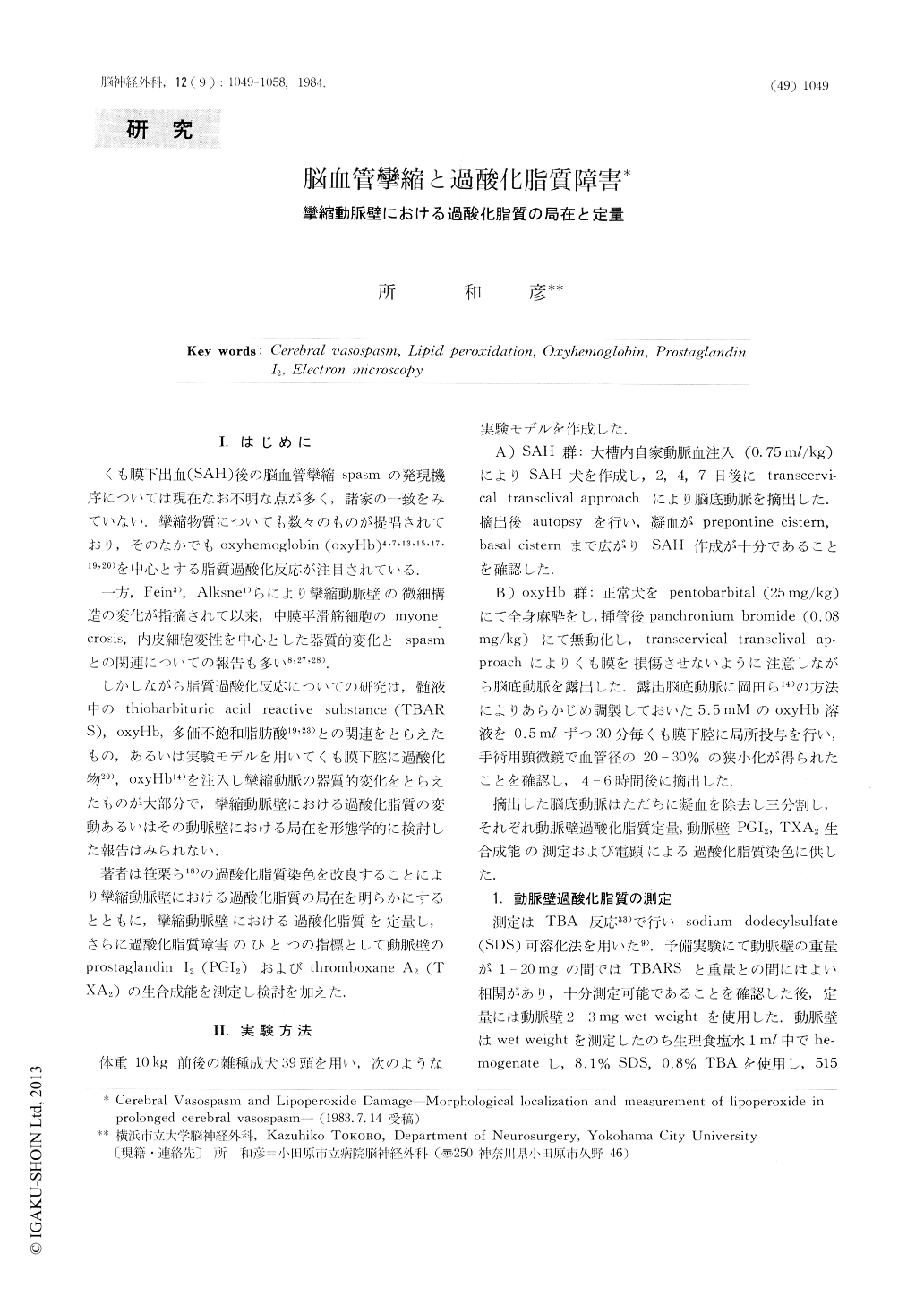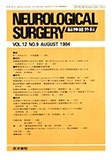Japanese
English
- 有料閲覧
- Abstract 文献概要
- 1ページ目 Look Inside
I.はじめに
くも膜下出血(SAH)後の脳血管攣縮spasmの発現機序については現在なお不明な点が多く,諸家の一致をみていない.攣縮物質についても数々のものが提唱されており,そのなかでもoxyhemoglobin(oxyHb)4,7,13,15,17,19,20)を中心とする脂質過酸化反応が注目されている.
一方,Fein3),Alksne1)らにより攣縮動脈壁の微細構造の変化が指摘されて以来,中膜平滑筋細胞のmyone crosis,内皮細胞変性を中心とした器質的変化とspasmとの関連についての報告も多い8,27,28).
Prolonged vasospasm was produced in the canine basilar artery by injection of 0.75 ml/kg of fresh autologous arterial blood into the cisterna magna (subarachnoid hemorrhage, SAH group) or by sub-arachnoid application of oxyhemoglobin (oxyHb induced group).
Lipoperoxide contents of the arterial wall was measured by thiobarbituric acid test. Prostaglandin I2 (PGI2) and thromboxane A2 (TXA2) biosynthetic activity of arterial wall was measured by radioimmuno-assay as their stable metabolites, 6-keto-prostaglandin F1α, thromboxane B2, respectively.

Copyright © 1984, Igaku-Shoin Ltd. All rights reserved.


